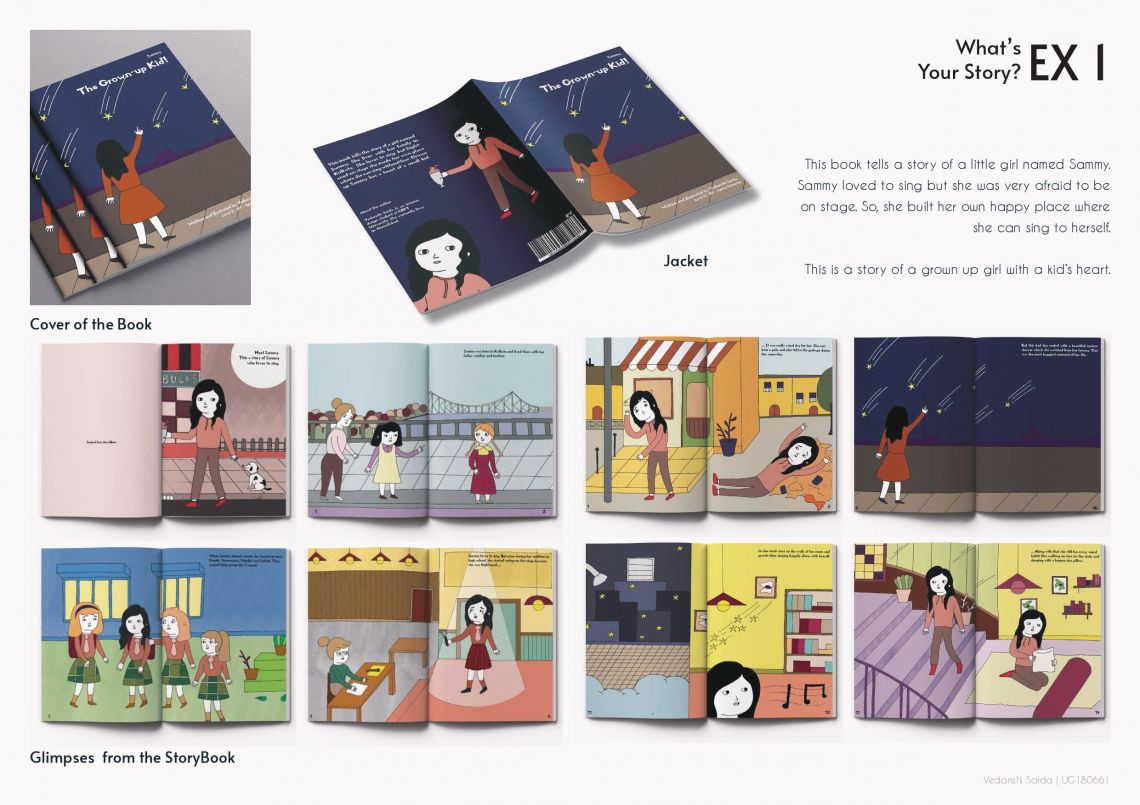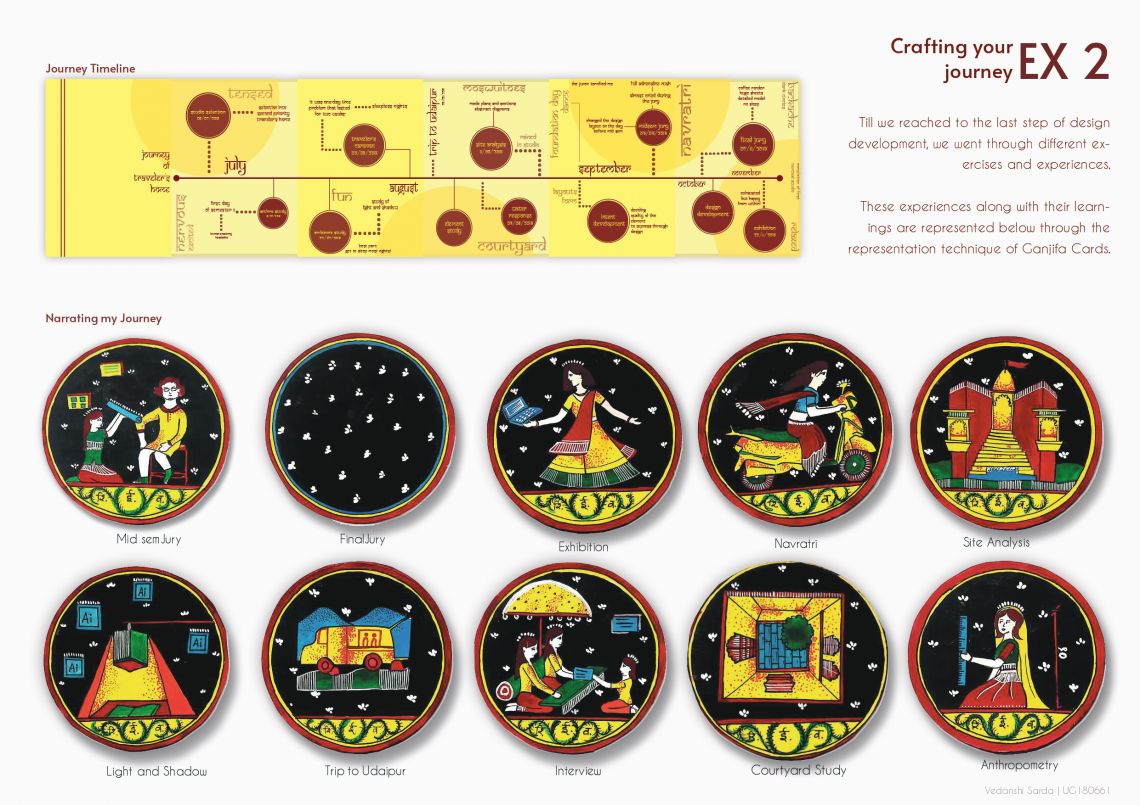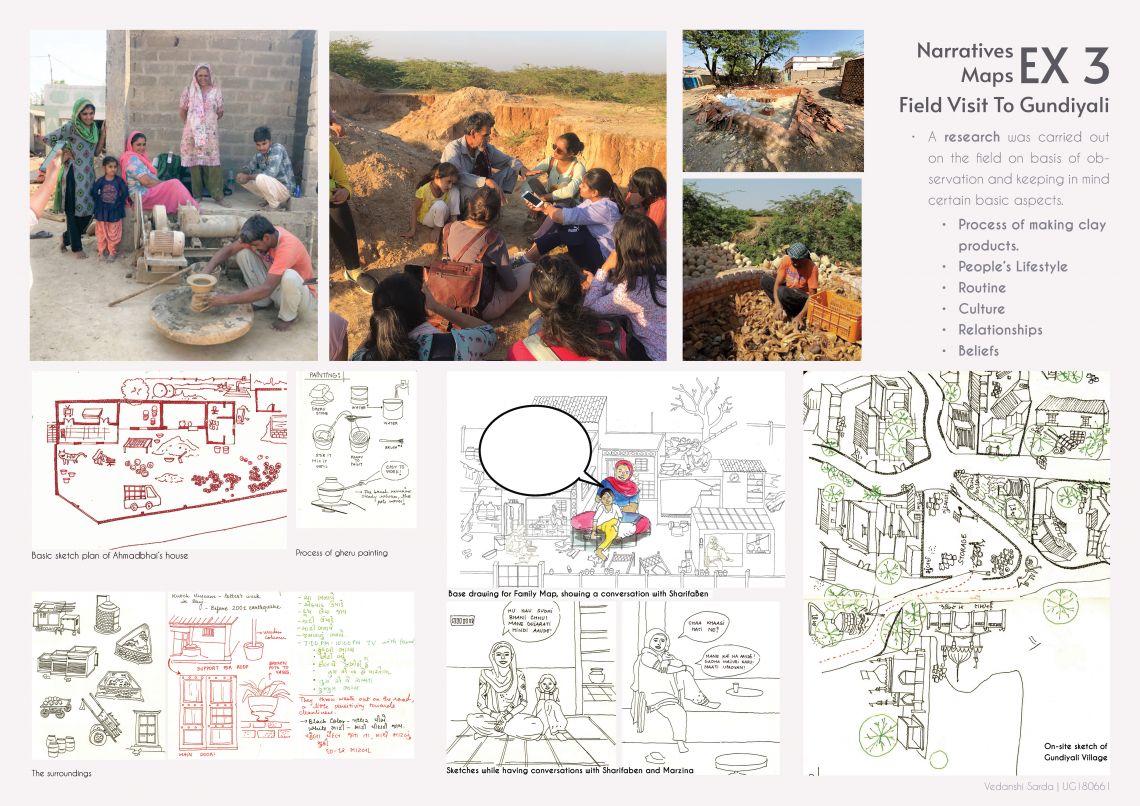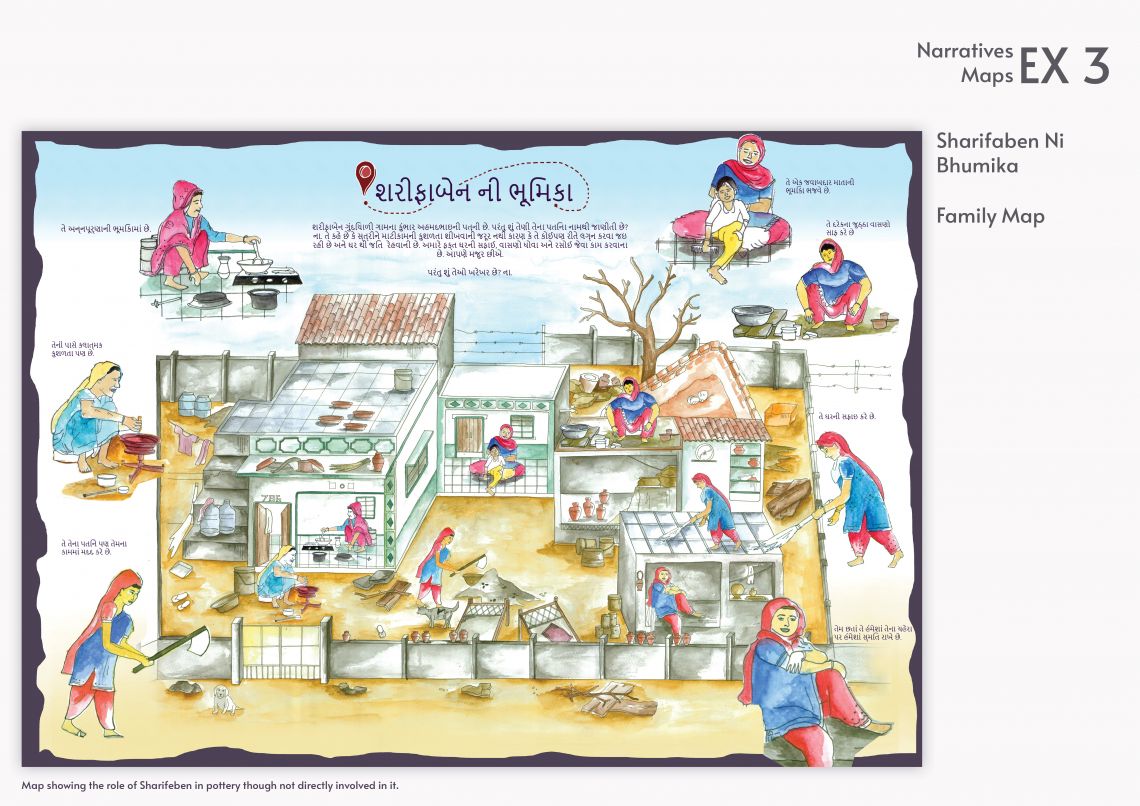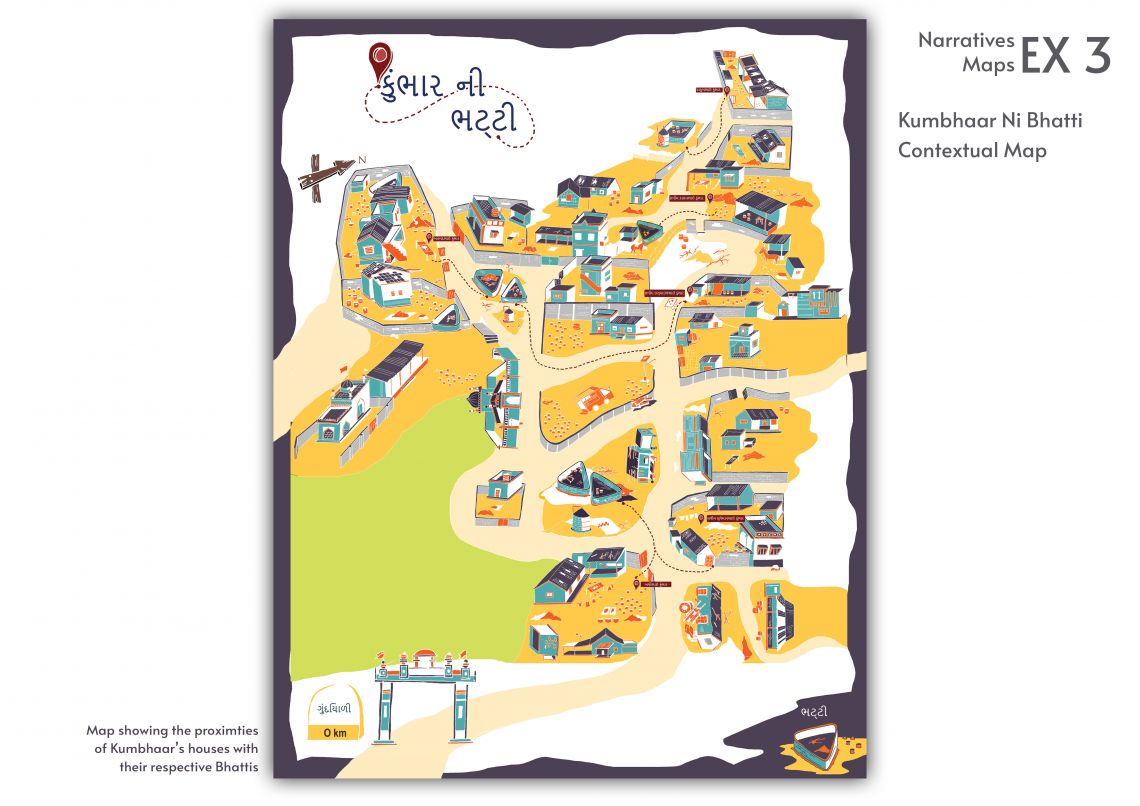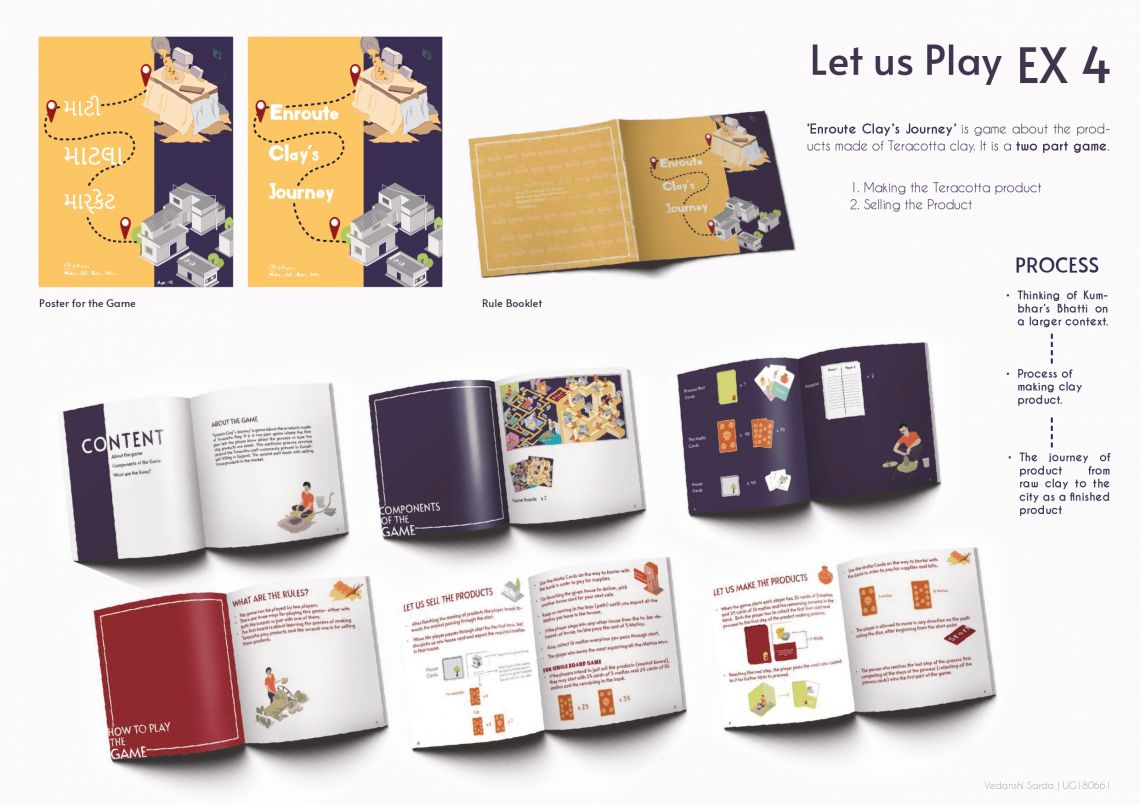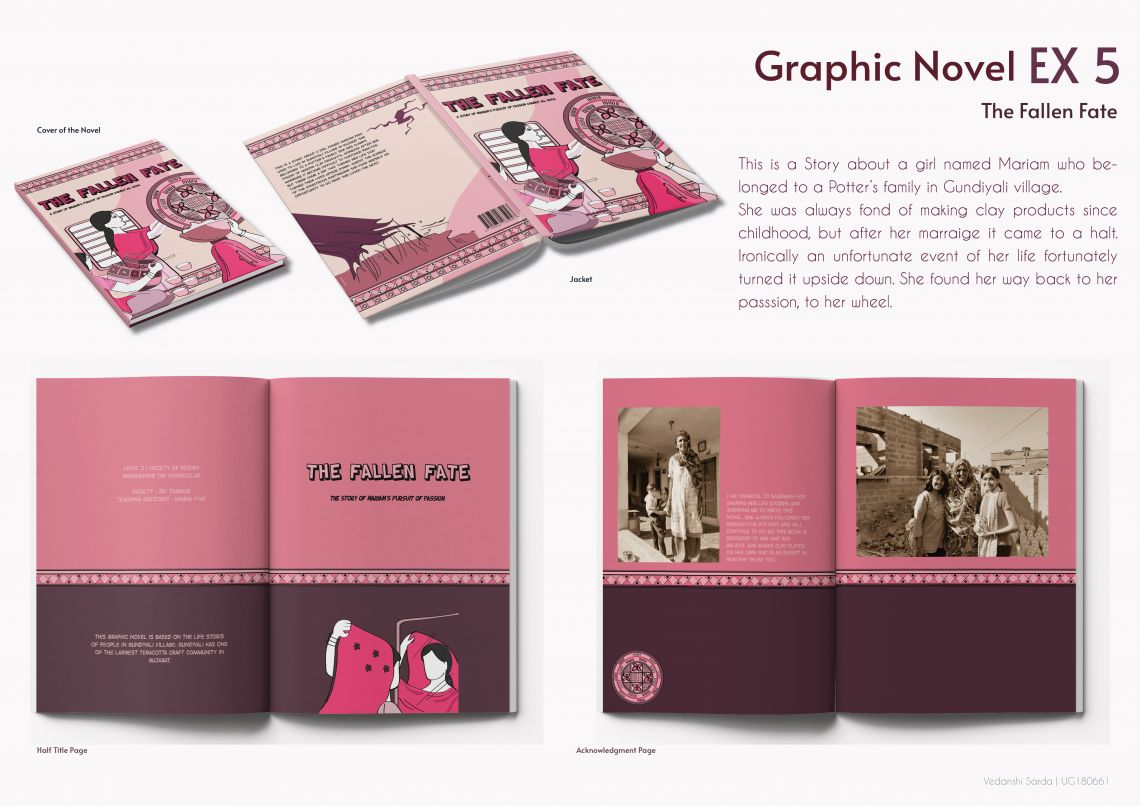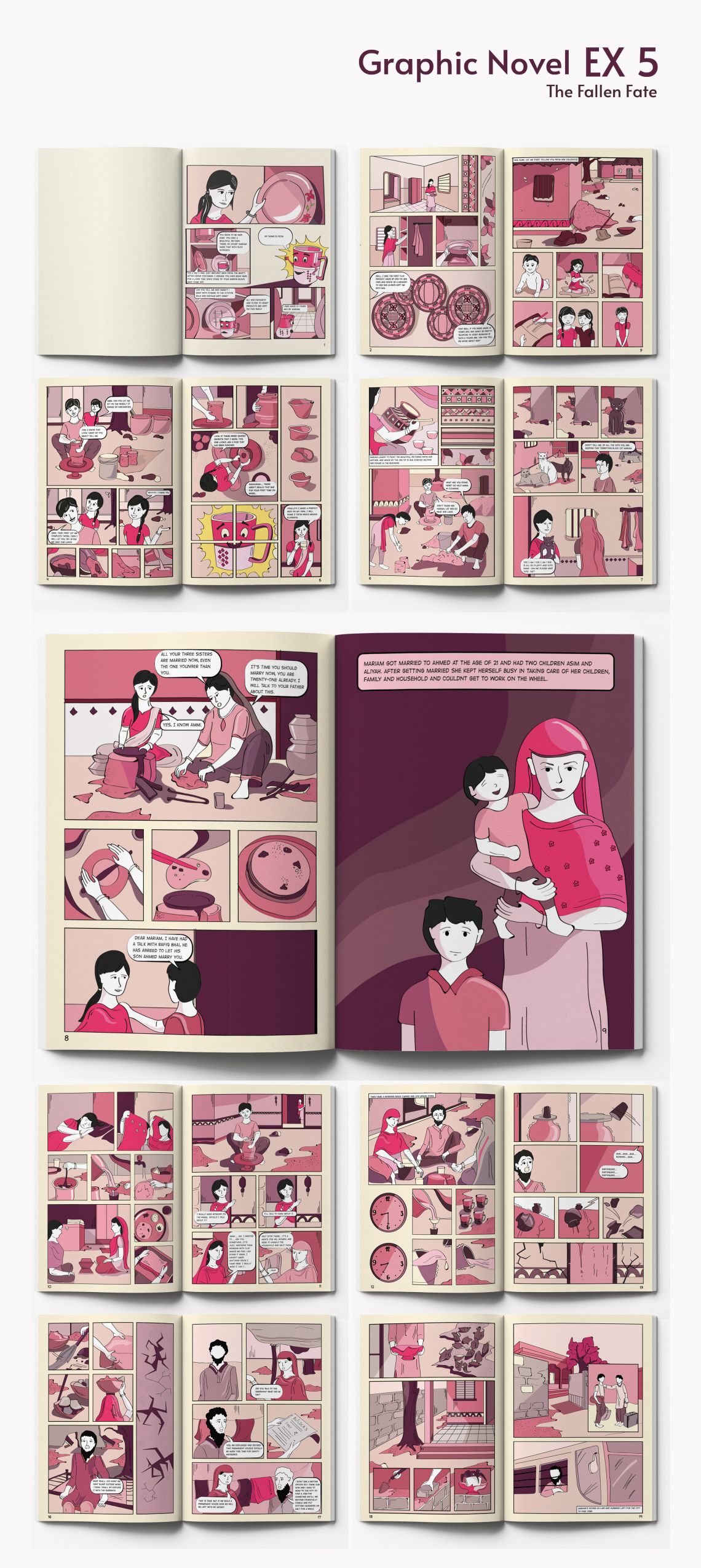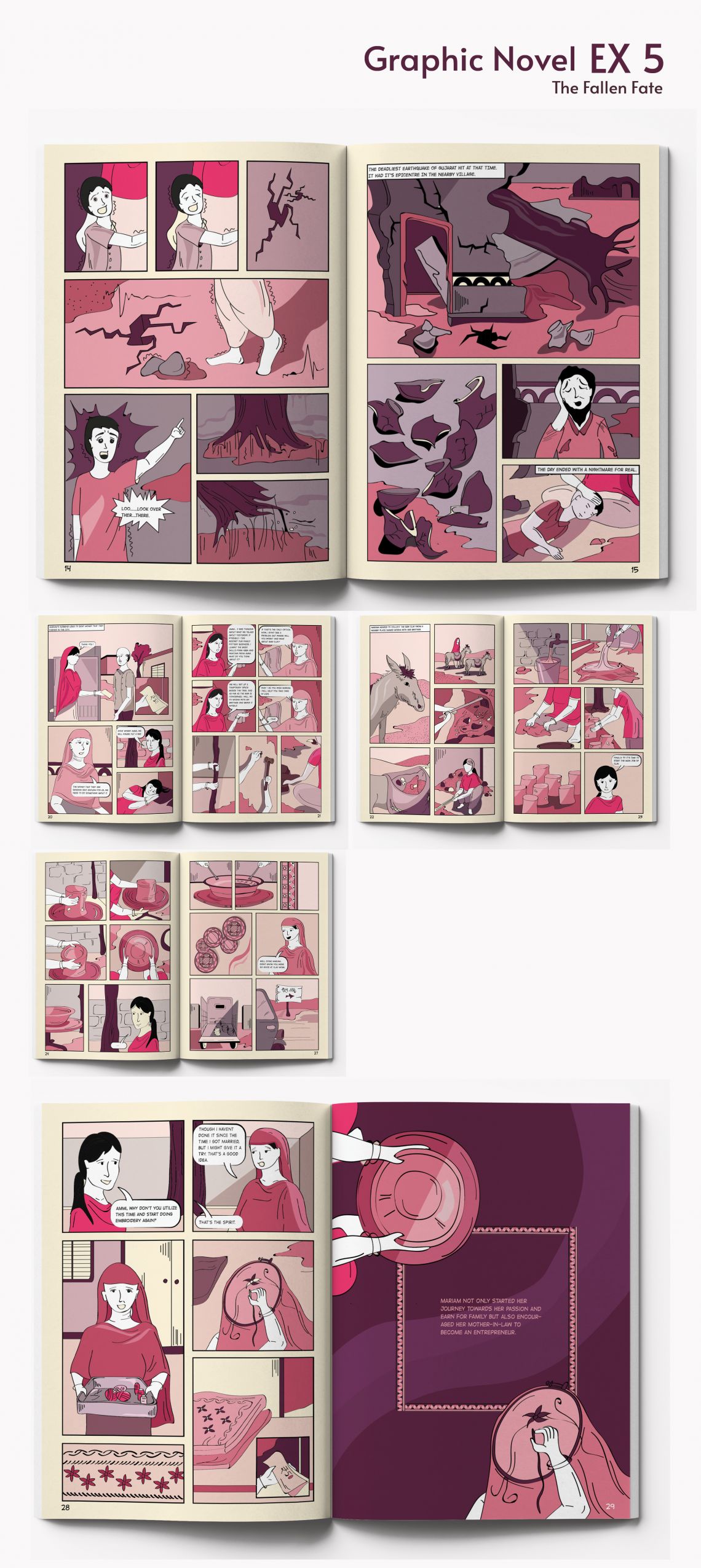Your browser is out-of-date!
For a richer surfing experience on our website, please update your browser. Update my browser now!
For a richer surfing experience on our website, please update your browser. Update my browser now!
The studio was a chronicle of different Narratives that we collected, analyzed and represented. There were such five narratives made with different learnings through Ethnographic Research, making a storybook, Data recording, Communication, On-site study, Graphic Novels, Game Design, Mapping narratives. Major of the narratives focused on the people, their lifestyle and the Terracotta Craft of Gundiyali Village (Kutch).
Graphic Novel :https://www.flipsnack.com/vedanshiisarda/the-fallen-fate.html
